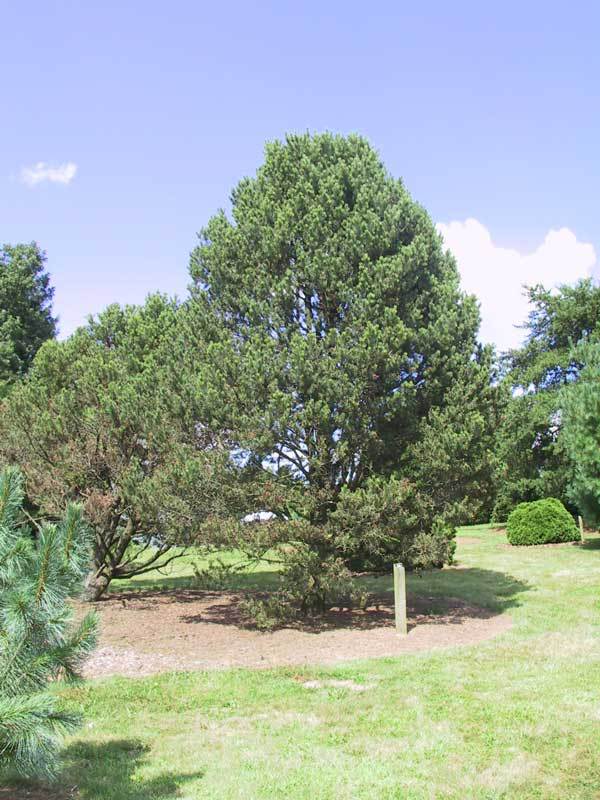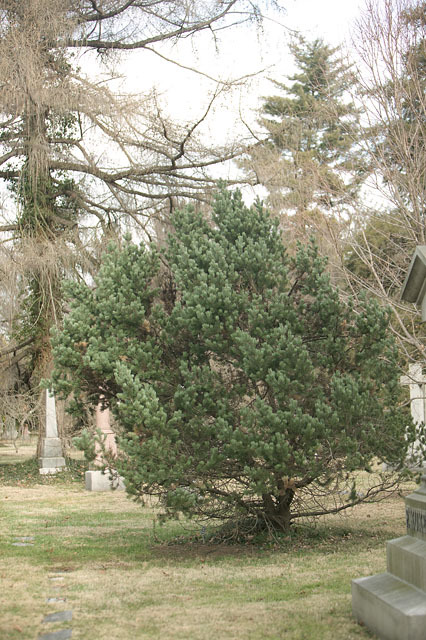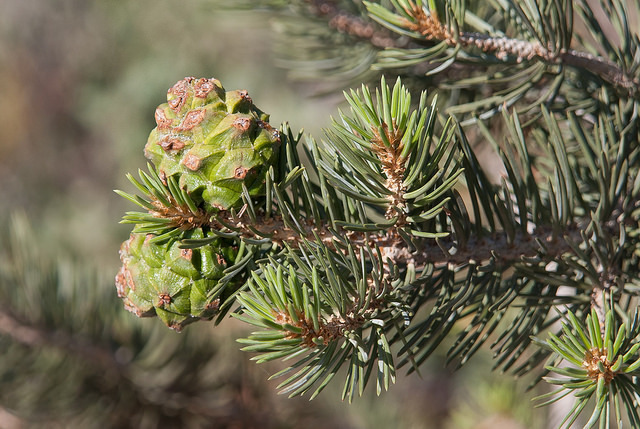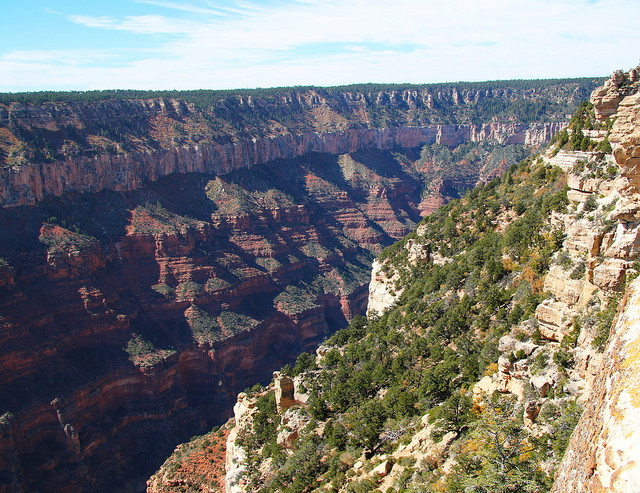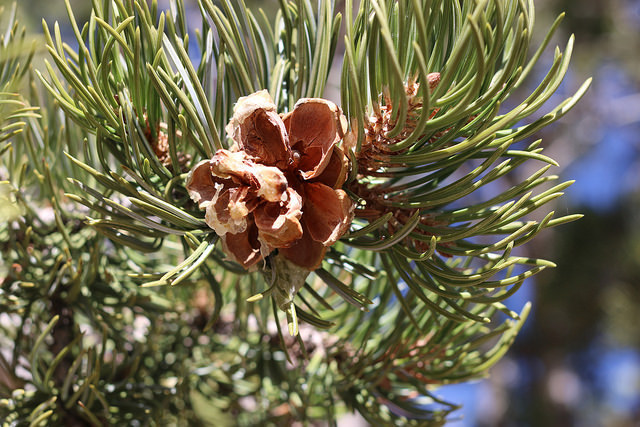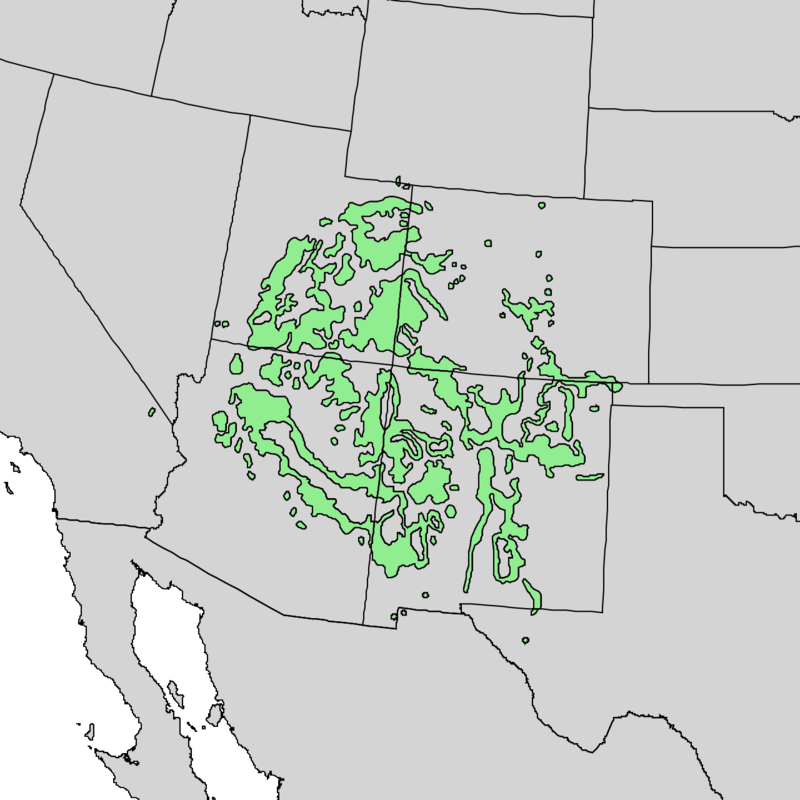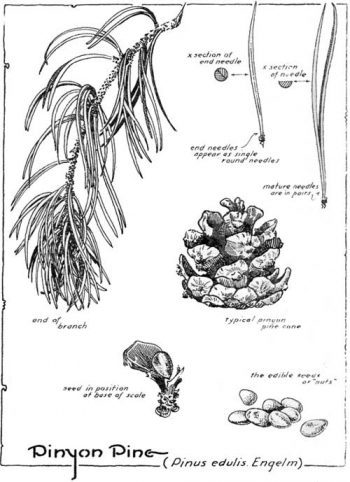
subgenus Strobus (Lemmon), section Quinquefoliae (Duhamel), subsection Cembroides (Engelmann).
Pinus edulis, first described in 1848 by Georg Engelmann (1809-1884), is commonly known as piñon pine; New Mexican, Colorado, mesa, two-leaved, or common piñon (or pinyon) pine. The species name is derived from the Latin work for "edible," pertaining to the tasty and nutritious seeds. This pine is the state tree of New Mexico.
Ethnobotany. The seeds are much eaten and traded by indigenous Americans, and by others who are lucky enough to partake of the harvest. The wood was formerly used in construction by Native Americans, and is still often used for fence posts and firewood. Due to their ecological importance, management of Pinus edulis woodlands is a major concern throughout their area of distribution. Principal management themes include wildfire control, grazing, invasion by weedy forbs and shrubs, and "grassland invasion" due to fire suppression. The literature on this subject is immense; search for "pinyon-juniper management" to see some examples.
Description. Piñon pine is an evergreen coniferous species of shrub or tree that grows to mature heights of 65 feet (21 m) with a strongly tapering trunk up to 24 inches (60 cm) in diameter, measured at breast height, and an dense, conic, rounded crown.
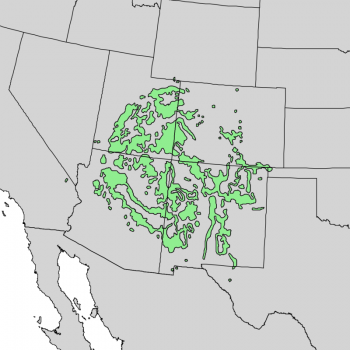
Distribution. This species is native to USA - widespread in Arizona, Utah, Colorado, and New Mexico, with small outlier populations in extreme eastern Nevada, southern Wyoming, extreme western Oklahoma, trans-Pecos Texas. Also native to Mexico - Chihuahua. Grows at elevations of 4,500 to 6,500 feet (1,500 - 2,100 m) above sea level on dry mountain slopes, mesas, and plateaus .
Although Americans tend to see piñon-juniper as a hot desert vegetation type, Pinus edulis in particular, occupies a relatively cold, relatively mesic niche within the piñon-juniper type. Annual precipitation varies with geography and elevation from about 10 to 27 inches (250 - 560 mm), and varies from summer-wet to winter-wet, though some summer rainfall occurs throughout the species' range. Pinus edulis tends to give way to junipers or desert shrubs on dry sites, and to forest trees such as Pinus ponderosa on wet sites. Temperatures in the species' range vary from January means of 14° to 42°F (-10 - 6°C) and July means of 68° and 80°F (20 - 27°C).
Hardy to USDA Zone 5 - cold hardiness limit between -20° and -10°F (-28.8° and -23.3°C).
